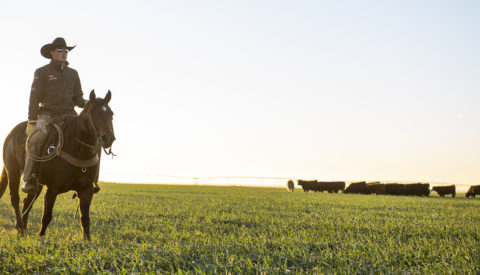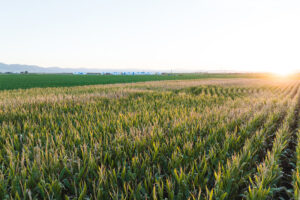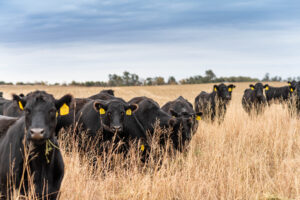Supply-Side Scenario Year-to-date (YTD) beef production through the end of August was 3.2% smaller than a year earlier while fed cattle slaughter was down 4.2% and cow slaughter fell 11.4%. During the same period, average dressed weights for all cattle were 3.1% heavier than a year before and fed cattle weights were 2.7% heavier. Record-high prices for replacement cattle have resulted in record-high projected breakevens despite a very wide spread between the expected cost of gain and value of gain. For the balance of the year, I don’t expect the tightening supply trend to change. For the balance of the year, I don’t expect the tightening supply trend to change. By year’s end, I expect beef production to be down 3.5% to 4%, which means the recent 8% to 10% year-over-year (YOY) decline in fed cattle slaughter will likely continue. Average fed cattle carcass weights have switched the recent trend and turned higher, growing at about a normal seasonal pace. The number of cattle placed into feed yards and expected to be marketed by year’s end is down nearly 5% versus last year and about 7% smaller than the previous five-year average. Cow slaughter totals, in my forecast, are likely to continue at levels that are 11% to 13% below a year ago. Price Outlook Remains Bullish but Volatile Choice boxed beef cutout values made an unusually late summer high during the week before Labor Day. Normally, the beef market peaks ahead of Memorial Day and spends the rest of the year in a defensive posture. Retail beef prices have continued their sharply higher trend as grocers adjust to the higher cutout values. July All-Fresh beef real per capita expenditures posted the fifth YOY gain for the year and were 5.5% larger than last year. Year to date, 2025 All-Fresh beef real per capita expenditures were 6.8% above a year earlier. I expect fed cattle prices to be mostly rangebound in the $235/cwt to $245/cwt area. I expect Choice boxed beef cutout values to be seasonally weaker going into late year but remaining record high (weekly or monthly versus a year earlier) and a staggering 20% to 25% above year-earlier levels. I expect the seasonal decline to be smaller than normal, as end meats are experiencing strong demand for use as ground beef raw material due to the unresolved tariff situation with Brazil, which has limited exports and imports. I expect fed cattle prices to be mostly rangebound in the $235/cwt to $245/cwt area. Fed cattle supplies will continue to tighten and be supportive to prices, but packers are likely to vigorously defend their recent return to slight profitability or at least breakeven. Recent cattle futures volatility emphasizes a continued greater risk to fall from record highs versus rally from here. Open interest appears on a path to shrink as funds take profits from their long positions and move to other investment opportunities. I expect the price spread between the Northern and Southern Plains to narrow as the lack of placements in the Southern Plains turns into fewer market-ready cattle. Feeder cattle and calf markets during Q4 are typically driven by tightening supplies of feeder-weight cattle and burgeoning supplies of spring-born calves. This generally results in rallying feeder cattle prices and lower calf prices. The only limiting factor from the supply side is the number of available heavy calves that are the first substitute for short supplies of feeder cattle. The current calf crop is historically small, and I expect it will likely provide only limited supply-side downward pressure on either market. “Less-than-normal seasonal weakness in the calf market” would be an accurate description of my forecast. Two factors are adding to my bullish-leaning outlook for both markets. One is that many feed yards and stocker operations are purchasing replacement cattle inventory to minimize tax implications for profits made this year. I fear many of these cattle will have the risk of turning this year’s profits into next year’s losses. The other factor is the U.S.-Mexico border remains closed to imports of feeders and calves from Mexico. YTD imports of cattle from Mexico are down 625,000 head and could be down about 850,000 for the year in total versus 2024. On the flip side, a change in the status of the current closure, which I don’t expect until well into 2026, remains one of the largest potential bearish risks to feeder and calf prices, especially in the Southern Plains. Following the mid-September break to futures prices, much discussion has turned to comparing the current market to the fall and early winter of 2023 and that the reset of replacement cattle prices is here. I’m not in that camp, largely because from a historical perspective it usually takes two turns of cattle losing significant money for input costs on replacement cattle to adjust. With the current extended feeding periods in the system, that is likely 12 full months of losses, and the feeding industry is still in a profitable period that has lasted 10 months.
More Articles
See All InsightsALBUQUERQUE, N.M., (Aug. 25, 2023) – The merger of Farm Credit of New Mexico and American AgCredit Farm Credit cooperatives will be effective Oct. 1, 2023,…
It’s the time of year when the annual discussion begins on spring planting acre numbers — and what that means for prices. Early indicators hint that
Situation Carcass weights began to climb during the first quarter of 2024 as Midwest cattle feeders held cattle to replace the weight lost during severe weather



